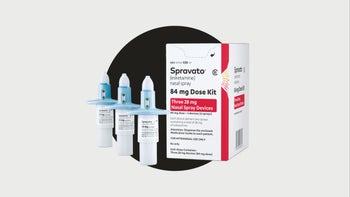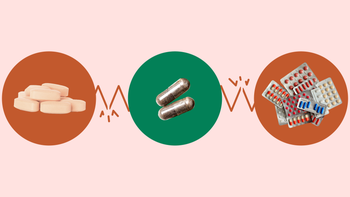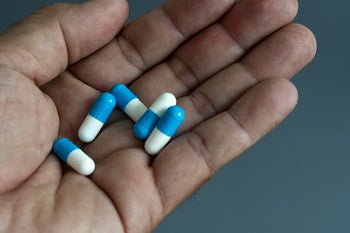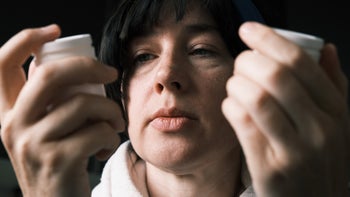
12 Signs of Depression in Men: Anger, Isolation, and Other Unexpected Symptoms
Key takeaways:
Symptoms of depression can look different in men compared to women. Understanding these differences can lead to early diagnosis and treatment.
In men, depression often presents as anger or irritability instead of sadness. This can make it difficult to recognize depression symptoms.
Depression is common in men, though it’s often undiagnosed. There are some risk factors that can make depression in men more likely.
Table of contents

More than 6 million men live silently with depression every year. There are likely many reasons for this, including downplaying signs and symptoms and waiting to seek help. But another part of the issue is a failure to recognize symptoms of depression in men.
Depression doesn’t look the same in men as it does in women. That’s one of the reasons that signs of depression in men can be more challenging to pick up on. Knowing which symptoms to look for is the key to early detection and timely intervention.
Let’s take a closer look at 12 warning signs that are more commonly associated with depression in men.
Search and compare options
1. Quick frustration, irritability, or inappropriate anger
About 30% to 40% of people with depression experience episodes of having a short temper. Many men may not fit the typical gloomy, dismal picture you may associate with depression. Instead, they may display fits of anger.
2. Feelings of hopelessness or emptiness
Depression can lead to a persistent pessimistic outlook toward life — with or without a specific reason. Rather than overwhelming sadness, chronic depression in men can look like a loss of motivation. Or it may look like a persistent negative view of the future.
3. Too little or too much sleep
Depression can cause sleep disturbances. This can take on many forms. It may look like:
Having trouble falling asleep
Regularly experiencing interrupted sleep
Waking up multiple times throughout the night
Sleeping for long hours without feeling refreshed
These are often hallmark signs of depression in men. It’s important to note that sleeping difficulties are also a risk factor of suicide.
4. Low energy and poor concentration
Among people experiencing depression, 90% report overwhelming fatigue. This is likely the result of poor-quality sleep. This fatigue can lead to low stamina and being easily distracted, which may interfere with your work and personal life. And this can feed into the vicious cycle of depression.
5. Lack of interest
Red flags for depression can include a lack of motivation, less desire to do things you enjoy, and spending less time with loved ones.
Withdrawing from people and interests may temporarily ease the burden of pretending to be OK. But isolation can have a damaging effect on mental health. It also increases the risk of an early death.
6. Risky behaviors, like self-medicating with alcohol or drugs
Men may engage in self-destructive behaviors as a way to numb emotions that are too painful to confront or feelings that are hard to talk about. Some behavior changes you may notice in a man who is depressed are:
Drinking too much alcohol
Experimenting with drugs
Driving recklessly
Gambling
Engaging in unsafe sex practices
People sometimes engage in these behaviors to mask the real, underlying issue of depression.
7. Escapist behavior
Excessive work or exercise may be vices used to block out how men are feeling and what’s happening. But depression won’t get better by ignoring it. In fact, avoiding the reality of depression will likely make the situation worse.
8. Controlling, violent, or abusive behavior
Some believe the social norm is for men to stay in control of their surroundings and emotions. But their struggle to hold it together can seem more like aggression rather than depression. This aggressive appearance can mask underlying depression. And this can make it harder to recognize the behavior as a symptom of depression.
9. Physical symptoms
Men may find it more difficult to share their concerns about their emotions than to discuss physical symptoms linked to depression. They may try to explain away their low mood by focusing on common physical symptoms of depression. These include:
Headaches
Chest tightness
Racing heart
Digestive issues
Body pain
10. Sexual dysfunction
Depression can cause sexual dysfunction in many forms. It can lead to:
A lower sex drive
Difficulty with sexual arousal
Absent or delayed orgasms
As many as 1 in 4 men who have erectile dysfunction also have depression. It’s also important to note that some medications prescribed to treat depression may cause sexual dysfunction. Be sure to discuss any concerns about your sexual health with your healthcare professional.
11. Change in weight
Dealing with depression can cause a change in appetite. You may find yourself eating more or less than usual, which can lead to changes in your weight. More research is needed to fully understand why this happens. But it may be that depression affects areas in the brain that respond to food. And this may cause a depression-related appetite change.
12. Suicidal thoughts
In the U.S., the rate of depression in men is half that of women. And yet men die by suicide four times as often. Repeated suicidal thoughts or threats shouldn’t be ignored. They’re warnings that the pressure to hide symptoms of depression has become too much to deal with. It’s important to get help right away.
What is the difference between depression in men and depression in women?
There are notable differences in depression between men and women. For example, depression rates are twice as high in women as in men. There are several theories about why this difference exists.
The signs of depression are also different between men and women. In women, depression is often marked by sadness and tearfulness. In men, symptoms can be very different. For example, sometimes men experience agitation or aggression in place of sadness. This means that depression isn’t as easily diagnosed in men because of this difference in symptoms.
These differences can make it harder for men to recognize their own depression and seek treatment. And it may make it harder for healthcare professionals to notice the subtle signs of depression in men.
Do men get postpartum depression?
It may not seem obvious, but men can also experience postpartum depression. Postpartum depression in men isn’t as common as it is in women. But about 10% of new fathers report symptoms of depression within the first year after their child’s birth. New dads may not recognize these symptoms for several months, as they can develop slowly over time.
Symptoms of postpartum depression in men may be more subtle than in new moms and can include:
Irritability
A restricted range of emotions
Indecisiveness
Sadness
If you’re a new father and you notice any of the subtle symptoms of postpartum depression, it’s important to talk to a healthcare professional.
Risk factors for depression in men
Depression is a complex disorder. And some men are at a higher risk for depression than others due to various factors. These risk factors include:
Personal or family history of depression: The genetics aren’t entirely clear. But depression is more common among blood relatives.
Illness: Ongoing health issues like heart disease, cancer, and diabetes can lead to symptoms of depression.
Medications: Over one-third of adults take medications that list depression as a potential side effect.
Traumatic events: Experiencing traumatic events can lead to depression over time. Stressful life events may be a stronger predictor of depression in men than in women.
Childhood abuse: The long-term mental consequences of abuse can make you more vulnerable to depression.
Effective treatments for men with depression
Depression is treatable, so there’s room for hope. Treatment options for depression in men are the same as those for women. But treatment plans can vary depending on how severe your symptoms are. They’re likely to include lifestyle and behavior changes or medication.
A few treatment options that focus on behaviors and lifestyle habits include:
Professional counseling
Psychotherapy with someone you trust
Stress management techniques (like meditation and yoga)
Practicing good sleep hygiene
Some common medications that are used to manage depression include:
Selective serotonin reuptake inhibitors (SSRIs), like sertraline (Zoloft) and fluoxetine (Prozac)
Serotonin and norepinephrine reuptake inhibitors (SNRIs), like venlafaxine and duloxetine (Cymbalta)
Monoamine oxidase inhibitors (MAOIs), like phenelzine and tranylcypromine
Tricyclic antidepressants (TCAs), like amitriptyline and nortriptyline
For some men, depression may be resistant to common treatments. This can happen in up to 30% of people with depression. In these cases, your healthcare professional may suggest other options. Treatment for more severe depression may include:
Brain stimulation therapies, like electroconvulsive therapy (ECT)
Your healthcare professional will recommend the best treatment options for you based on your symptoms and medical history.
Helpful resources and behavioral health organizations for men
If you or a loved one are experiencing depression, you don’t have to brave it alone. Here are some resources for men that can help:
Man Therapy: This mental health campaign is dedicated to helping men take better care of themselves. Man Therapy includes a head inspection assessment, connects men with resources, and shares tips on how to handle intense emotions.
National Alliance on Mental Illness: The National Alliance on Mental Illness is dedicated to promoting awareness and providing support for mental health. You can reach them at 1-800-950-NAMI (1-800-950-6264) or text “NAMI” to 741-741 for free crisis support.
998 Suicide and Crisis Lifeline: The national 24/7 suicide and crisis or emotional distress helpline is available by calling 1-800-273-TALK (800-273-8255).
Face It Foundation: This is a network of support groups, peer support, and other services for men to confront depression and begin recovery.
HeadsUpGuys: This association provides men with strategies and information to help manage or prevent depression. It’s also a resource to help find a therapist.
Movember Foundation: This charity focuses on issues that affect men’s physical and mental health.
Brother, You Are On My Mind: This joint effort between Omega Phi Psi Fraternity and the National Institute on Minority Health and Health Disparities, provides a toolkit to address depression and stress in African American men.
Men’s Group: This online men’s discussion forum is a safe place for men to talk over life challenges such as divorce, depression, and parenthood.
Quiz: Am I depressed?
The bottom line
Gender stereotypes are barriers in the diagnosis of depression in men. They can make it harder to recognize the symptoms of depression that men may have. Knowing what to look for and how depression may show up in men can lead to early diagnosis and treatment.
Remember, depression is not a sign of weakness — it’s an illness. And there are effective treatments available, so you can have a happy and healthy recovery. If you’re concerned about signs of depression, talk to your healthcare professional for guidance and to determine next steps.
Why trust our experts?



References
Al-Harbi, K. S. (2012). Treatment-resistant depression: Therapeutic trends, challenges, and future directions. Patient Preference and Adherence.
American Psychological Association. (2005). Men: A different depression.
Assari, S., et al. (2016). Stressful life events and risk of depression 25 years later: Race and gender differences. Frontiers in Public Health.
Bernert, R. A., et al. (2007). Sleep disturbances and suicide risk: A review of the literature. Neuropsychiatric Disease and Treatment.
Craft, L. L., et al. (2004). The benefits of exercise for the clinically depressed. Primary Care Companion to the Journal of Clinical Psychiatry.
de Heer, E. W., et al. (2014). The association of depression and anxiety with pain: A study from NESDA. PLoS One.
Dutheil, F., et al. (2020). Exploring the link between work addiction risk and health-related outcomes using the job-demand-control model. International Journal of Environmental Research and Public Health.
Fava, M., et al. (1999). Anger attacks in patients with depression. Journal of Clinical Psychiatry.
Ghanean, H., et al. (2018). Fatigue in patients with major depressive disorder: Prevalence, burden and pharmacological approaches to management. CNS Drugs.
Goyal, M., et al. (2014). Meditation programs for psychological stress and well-being. JAMA Internal Medicine.
Guajardo, V. D., et al. (2011). Loss of interest, depressed mood and impact on the quality of life: Cross-sectional survey. BMC Public Health.
Holt-Lunstad, J., et al. (2015). Loneliness and social isolation as risk factors for mortality: A meta-analytic review. Perspectives on Psychological Science.
Jacka, F. N., et al. (2013). Depression, diet and exercise. Medical Journal of Australia.
Kapfhammer, H. P., et al. (2006). Somatic symptoms in depression. Dialogues in Clinical Neuroscience.
Keller, A. S., et al. (2019). Paying attention to attention in depression. Translational Psychiatry.
Kendler, K. S., et al. (1999). Causal relationship between stressful life events and the onset of major depression. The American Journal of Psychiatry.
Korn, C. W., et al. (2014). Depression is related to an absence of optimistically biased belief updating about future life events. Psychological Medicine.
Martin, L. A., et al. (2013). The experience of symptoms of depression in men vs women: Analysis of the national comorbidity survey replication. JAMA Psychiatry.
National Alliance on Mental Illness. (n.d.). ECT, TMS and other brain stimulation therapies.
National Institute of Mental Health. (2021). Chronic illness and mental health: Recognizing and treating depression.
National Institute of Mental Health. (2023). Men and mental health.
National Institute of Mental Health. (2024). Brain stimulation therapies.
National Institute of Mental Health. (2024). Depression.
Nutt, D., et al. (2008). Sleep disorders as core symptoms of depression. Dialogues in Clinical Neuroscience.
Qato, D. M., et al. (2018). Prevalence of prescription medications with depression as a potential adverse effect among adults in the United States. Journal of the American Medical Association.
Radell, M. L., et al. (2021). The impact of different types of abuse on depression. Depression Research and Treatment.
Rajkumar, R. P., et al. (2015). Depression and anxiety in men with sexual dysfunction: A retrospective study. Comprehensive Psychiatry.
Sahu, A., et al. (2014). Depression is more than just sadness: A case of excessive anger and its management in depression. Indian Journal of Psychological Medicine.
Salk, R. H., et al. (2017). Gender differences in depression in representative national samples: Meta-analyses of diagnoses and symptoms. Psychological Bulletin.
Scarff, J. R. (2019). Postpartum depression in men. Innovations in Clinical Neuroscience.
Shadrina, M., et al. (2018). Genetics factors in majors depression disease. Frontiers in Psychiatry.
Simmons, W. K., et al. (2016). Depression-related increases and decreases in appetite reveal dissociable patterns of aberrant activity in reward and interoceptive neurocircuitry. American Journal of Psychiatry.
Steiger, A., et al. (2019). Depression and sleep. International Journal of Molecular Sciences.
Weinstein, A., et al. (2015). A study on the relationship between compulsive exercise and depression and anxiety. Journal of Behavioral Addictions.
For additional resources or to connect with mental health services in your area, call SAMHSA’s National Helpline at 1-800-662-4357. For immediate assistance, call the National Suicide Prevention Lifeline at 988, or text HOME to 741-741 to reach the Crisis Text Line.

























